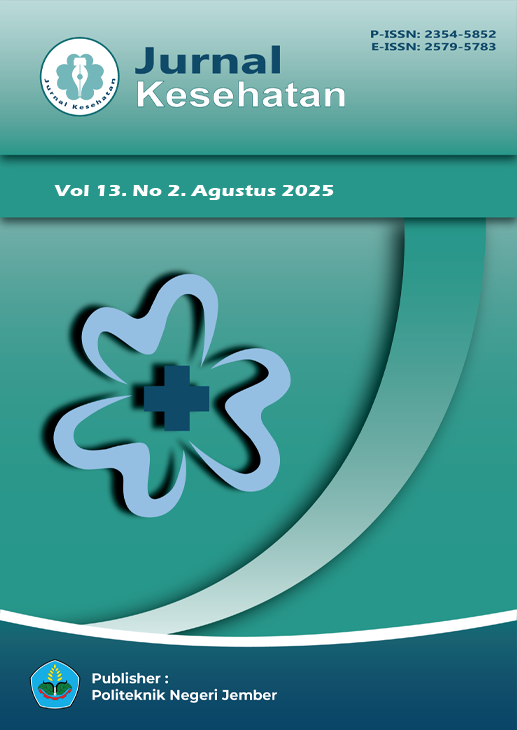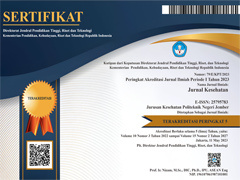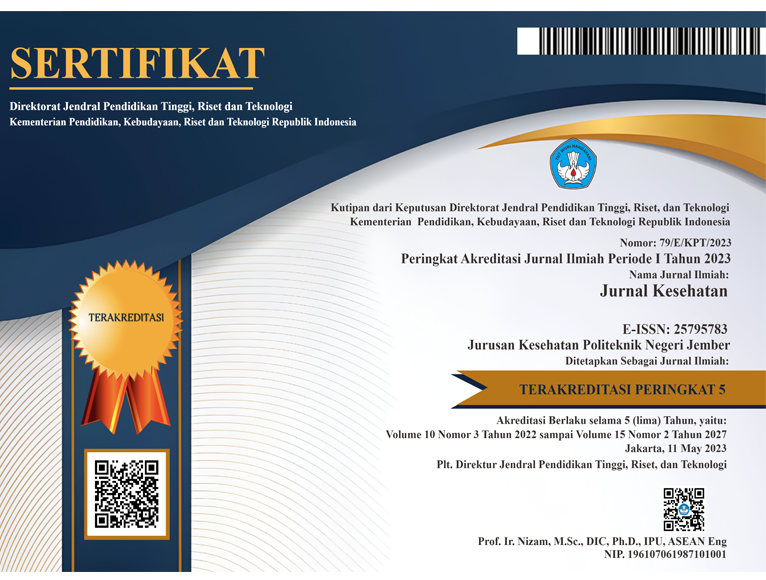Formulasi Soft Cookies Berbasis Tepung Kacang Hijau dan Tepung Kacang Tanah Sebagai Makanan Selingan Sumber Protein pada Wanita Usia Subur
-
DOI:
10.25047/j-kes.v13i2.607Downloads
Abstract
Protein is a crucial nutrient necessary for the body to perform various vital functions support growth, repair tissues, and maintain reproductive health, especially for women of reproductive age. Adequate protein intake helps prevent chronic energy deficiency (CED) and stunting. This study aimed to develop soft cookies produced with mung bean flour and peanut flour as a protein-rich snack. The research applied a Completely Randomized Design (CRD) with five formulations of mung bean flour and peanut flour ratios: (90%:10%), (80%:20%), (70%:30%), (60%:40%), and (50%:50%). The analysis covered protein content, organoleptic properties (color, taste, aroma, texture), nutritional composition, and the best formulation. The best result was obtained from formulation P5, which contained 6,28% moisture, 1.49% ash, 14,77 g protein, 23,28 g fat, 54,19 g carbohydrates, and 486 kcal per ,00 grams. This formulation was preferred by panelists due to its brown color, sweet taste, neutral mung bean aroma, and soft texture. A 60 g serving provides 294 kcal, 9 g protein, 13.96 g fat, and 33 g carbohydrates. These soft cookies have the potential to be a nutritious, affordable, plant-based protein snack that supports the prevention of CED and stunting.
Keywords: Soft cookies, snack, mung bean flour, peanut flour, CED
License
Copyright (c) 2025 Rahmatika Harumi, Dina Fitriyah, Huda Oktafa, Heri Warsito

This work is licensed under a Creative Commons Attribution-ShareAlike 4.0 International License.
Authors who publish in this journal agree to the following terms:
1. Copyright belongs to the medical journal as a publication
2. The author retains copyright and grants the journal rights to the first publication carried out simultaneously under a Creative Commons Attribution License which allows others to share the work with an acknowledgment of the author's work and initial publication in this journal.
3. Authors may enter into separate additional contractual arrangements for the non-exclusive distribution of the work (eg sending it to an institutional repository or publishing it in a book) with acknowledgment of initial publication in this journal.
4. Authors are permitted and encouraged to post work online (eg in institutional repositories or on their websites) before and during the submission process, as before and larger citations of published work (see Effects of Open Access).
Selengkapnya tentang teks sumber ini














